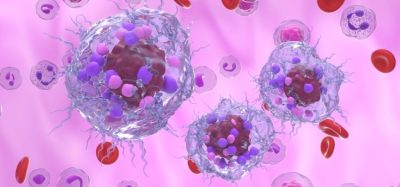Integration is key
Drug development has become more complex and significantly more expensive. There has been an estimated 55% increase in the critical path development costs since the year 20001. More than 50% of these costs are incurred in later phase development (Phase IIb and III studies).
Drug development has become more complex and significantly more expensive. There has been an estimated 55% increase in the critical path development costs since the year 20001. More than 50% of these costs are incurred in later phase development (Phase IIb and III studies).
Drug development has become more complex and significantly more expensive. There has been an estimated 55% increase in the critical path development costs since the year 20001. More than 50% of these costs are incurred in later phase development (Phase IIb and III studies).
Recent studies suggest that an estimated investment of US$1.7B is required from discovery to launch one successful drug product2. New product launches are down. The number of new products launched onto global markets has actually fallen over the past decade, on average by 2% each year, and is predicted to decline even further before it recovers. Only 58 new drugs received marketing approval from the USFDA in 2002-2004. This represents a 47% decrease from the peak of 110 approved new drugs in 1996-19983.
The US FDA described the development process of a new medical product as challenging, costly and inefficient4. Drug developers need to embrace the advances in new technologies such as proteomics, genomics, the use of biomarkers and surrogate markers that will enhance the development of more complex drugs of high therapeutic value while improving assessments of product safety and effectiveness. Another equally pressing challenge is the increasing burden of global regulatory compliance – the extra requirements imposed by the EU Clinical trials Directive is just one recent example5.
R&D expenditures are increasing at a rate far exceeding new product approvals3. Furthermore a series of recent high profile product withdrawals on safety grounds e.g. rofecoxib, cerivastatin, troglitazone and cisapride have raised safety concerns amongst regulators who have become more cautious about the drugs they approve.
The very high drug candidate failure rate after discovery illustrates the inefficiency in the development process and contributes significantly to the cost. Currently less than 1% of compounds entering the drug development pipeline will reach the market, with 90% of the failures occurring during preclinical development. Furthermore of those compounds that do enter early clinical development, fewer than 8% will go on successfully to complete Phase III studies.
Traditionally, the high cost of drug development has been counterbalanced by the potentially large return on investment that follows the discovery and successful introduction of a blockbuster drug. However, the signs are that the era of the blockbuster is ending, and high development costs are increasingly being seen as a disincentive to investment. In this sense the situation is self-perpetuating, as lack of investment can only lead to fewer new products reaching the market. In addition, the failure of a product in late clinical development can be financially catastrophic for the company concerned, all of which points to an urgent need to find more efficient ways of eliminating no-hopers early in the development cycle, before costs increase.
A new approach is required to produce better drug products, reduce development time and costs, improve efficiency and reduce the late-phase attrition rate, thereby maximising the return on investment in drug discovery.
Integrated protocols
One such approach is to reduce the sequential nature of early clinical development. This can be achieved by evaluating the required optimal product profile, identifying and applying essential criteria for ‘Go/No-go’ decisions that focus on drug characteristics critical for successful later phase development.
Early clinical studies in healthy volunteers and patients play a crucial role in the development of later phase clinical trials. These studies provide initial data on safety and tolerability, they examine whether the pharmacological effects seen in experimental animals are expressed in man; they provide crucial dose response data and the pharmacokinetic and pharmacodynamic investigations provide necessary information to support selection of dose regimens to be used in later trials6.
An integrated early clinical development plan utilises innovative flexible study designs, concentrating on the generation of critical data for ‘Go/No-go’ decision making and enables efficiencies in time and cost. Using the integrated approach the preliminary investigations of safety, tolerability, pharmacokinetics and pharmacodynamics (including proof-of-concept) following single and multiple doses of a new compound are performed in one integrated protocol.
There are a number of advantages to the integrated protocol in early clinical development. Studies are performed in small numbers of subjects under controlled experimental conditions employing the rigorous scientific and operational disciplines of traditional Phase 1. This reduces the variability of the data and the introduction of bias in the interpretation of the data. The studies are usually double-blind, randomised and placebo-controlled and divided into a number of distinct parts. Where appropriate the use of an active comparator may be included. By focusing on obtaining the critical data required for further development unnecessary investigations are also avoided. These studies also permit investigation in the target population much earlier, and enable dose selection for Phase IIb efficacy studies to be made more rationally using pharmacodynamic/proof-of-concept data. There is a smooth transition from one part of the study to the next, thus improving scientific and operational continuity, unnecessary delays are eliminated, the time to study completion is shortened and costs are reduced. These study designs are accepted in the UK by the regulatory authority (MHRA) and Type 1 recognised Research Ethics Committees.
Study designs
In developing an integrated protocol, it is important that a number of factors be taken into account. Early clinical development is exploratory. Preclinical studies whilst providing valuable information are not always predictive of the potential effects in man. Therefore it is essential that the protocol design be flexible to cope with the exploratory nature of this early stage.
The design is individualised to the particular compound under investigation. This involves reviewing all aspects of the proposed therapeutic indication, including current therapies and unmet clinical need, seeking the opinion of clinical experts in the relevant areas, critically evaluating the preclinical data for evidence of activity and any potential safety issues. The critical data needed to support the continued development of the compound into the later clinical phases is identified and the appropriate investigations required providing this data are included. The use of appropriate biomarkers or surrogate markers for the assessment of safety, mechanistic proof of concept and potential activity should be considered, as well as the use of specialised techniques (e.g. microdosing, imaging and genotyping for metabolic or receptor selectivity). It is advisable to build in scope to permit repeat or additional investigations and to consider the implications of age, gender and metabolic status in the design.
Case studies
This approach has been used in a range of therapeutics areas (e.g. respiratory, anti-coagulant, immunology) in our Phase 1 unit. We have performed 16 integrated protocols to date.
Case 1: Respiratory
- Single protocol investigating the safety, tolerability, Food Effect, POC of single and multiple doses of a new anti-asthmatic agent in healthy volunteers and mild asthmatic patients
- POC included a challenge study in patients
- Reduced program time by nine months
Case 2: Immunology
- Single protocol investigating the safety, tolerability, POC of single and multiple doses of a new immunomodulator in healthy volunteers
- Employed specialist biomarker assays to determine activity and establish POC
- Reduced program time by about six months
- Enabled acceleration of Phase IIb clinical programme
Case 3: Anti-coagulation
- Single protocol investigating the safety, tolerability, POC of single and multiple doses of a new anticoagulant in healthy volunteers
- Reduced program time by about six months
- Employed active comparator and placebo
- Included challenge agent to provide further evidence of clinically relevant activity
Minimise risk, maximise flexibility
Flexible, integrated protocols are a useful tool and are becoming more common in early clinical development. The flexible design permits a focused scientific exploratory investigation of a new compound in man under well controlled conditions. They expedite rapid clinical evaluation up to proof-of-concept, eliminate unnecessary delays and provide critical information to support ‘Go/No-go’ decision-making earlier in the development process. They enable better dose selection for Phase IIb studies, reduce development time, decrease costs, provide better candidate selection for later phase development, and therefore help to minimise the risk of late-phase failures.
However integrated protocols will not make the development of a pharmaceutical product easy. These are complex protocols that require experienced clinical investigators with expertise in clinical pharmacology supported by experienced investigational staff and clinical units with appropriate support services to enable smooth and appropriate study progression.
References
- Boston Consulting group. A revolution in R&D: How Genomics and Genetics Are Transforming the Biopharmaceutical Industry. (Boston Consulting Group, Boston, Massachusetts, 2001.)
- DiMasi, J., Hansen, R.W. and Grabowski, H. G. The Price Of Innovation: New Estimates Of Drug Development Costs. J Health Econ. 22, 151-185(2003)
- Tufts CSSD. Outlook Report 2006
- FDA. Innovation/Stagnation: Challenge and Opportunity on the Critical Path to New Medical Products. March 2004
- The European Clinical Trials Directive 2001/20/EC.
- M.D. Rawlins. Cutting the Cost Of Drug Development? Nature: 3, 360-364 2004








